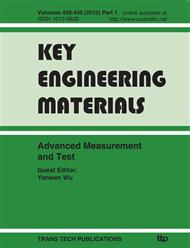p.1171
p.1177
p.1184
p.1190
p.1197
p.1203
p.1209
p.1223
p.1230
Two Vanishing Points Error Estimation Based on Line Clustering and Condition Adjustment with Parameters
Abstract:
In close-range digital photogrammetry and computer vision, a major challenge is the automation of 3D reconstruction from 2D-images. And single image calibration is a fundamental task in these areas for research. It is known that camera parameters can be recovered by the vanishing points of three orthogonal directions. However, three reliable and well-distributed vanishing points are not always available. Therefore, how to estimate the error of two vanishing points is very significant for us to analyze the precision of camera calibration. New methods for vanishing point detection and error estimation are presented, which can be illustrated as follows. Firstly, the line clustering, which parallel to object lines and correspond to the vanishing points, are detected based on RANSAC (Random Sample Consensus). Secondly, "condition adjustment with parameters" is utilized to estimate a nonlinear error equation. Thirdly, the error of vanishing point is expressed by error ellipse that is derived by co-factor matrix according to adjustment principle. Finally, experimental results of vanishing points coordinates and their errors are shown and analyzed.
Info:
Periodical:
Pages:
1197-1202
Citation:
Online since:
June 2010
Authors:
Price:
Сopyright:
© 2010 Trans Tech Publications Ltd. All Rights Reserved
Share:
Citation:


